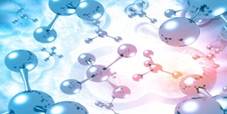Venom Metabolomics Services
The emergence of high-throughput omics technologies, such as transcriptomics, proteomics, and metabolomics, has revolutionized the study of venoms. They have facilitated large-scale data collection and analysis and can identify and characterize low-abundance venom components. With the continuous development of modern metabolomics techniques, such as liquid chromatography-mass spectrometry or gas chromatography-mass spectrometry, analyzing the metabolite spectrum of venom also helps to better understand the pathology and pharmacology of venom components.
Our Venom Metabolomics Services
So far, most animal venom studies are still focused on protein and peptide compounds, and there is no comprehensive report on the metabolome. The purpose of Creative Proteomics service is to use mass spectrometry-based metabolomics to identify and quantify the metabolites present in the venom of various toxic species such as snakes, scorpions, spiders, bees, etc. We applied two different MS-based methods. The first is to use non-targeted metabolomics, that is, high-resolution, accurate-mass MS to obtain a broad overview of the metabolic components of the venom, but no quantitative data. The second method is to quantify the metabolites in venom samples using targeted metabolomics methods. We also provide analysis services for some common metabolites of venom.
Application Areas
- Physiologically active amine analysis in venom. Histamine causes vasodilation and induces hyperpermeability of the blood vessels, which helps the venom components to enter the blood circulation of the prey. Dopamine and norepinephrine increase the heart rate and enhance the distribution of other venom components to the site of action. Theophenamine prolongs the local effects of the venom by constricting capillaries and venules
- Amino acids and derivatives analysis in venom. Some neuroactive amino acids, such as glycine, glutamic acid, aspartic acid, β-alanine, taurine, GABA, may promote paralysis of prey and rapid metabolism in the liver.
- Lipid analysis in venom. Lipids are a class of organic compounds composed of fatty acids or their derivatives, and glycerophospholipids and phospholipids are the main types of lipids in certain venoms.
- Organic acids analysis in venom. Organic acids are important active small molecules in venoms, which in many toxic species have not been fully explored.
Our Advantages
- Reliable and comprehensive metabolite identification and quantification.
- Use different solvents to detect and measure as many compounds as possible in the venom to obtain complementary results.
- Different analysis platforms are used to study the chemically diverse venom metabolites.
- Broaden the knowledge about the composition of the venom and enrich the knowledge of its pathology and pharmacological properties.
The technology of venom metabolomics based on MS has been developed rapidly. It can identify and quantify the existing metabolites for the venom, and it can not only help to study the presence of amines, amino acids, carbohydrates and organic acids in the venom, but also provide other metabolite types of venom components information.
Creative Proteomics has an advanced technology platform and rich service experience and can provide you with satisfactory venom research services. If you are looking for venom metabolomics research not mentioned on this website, please feel free to contact us via email or phone!
For research use only. Not intended for any clinical use.




